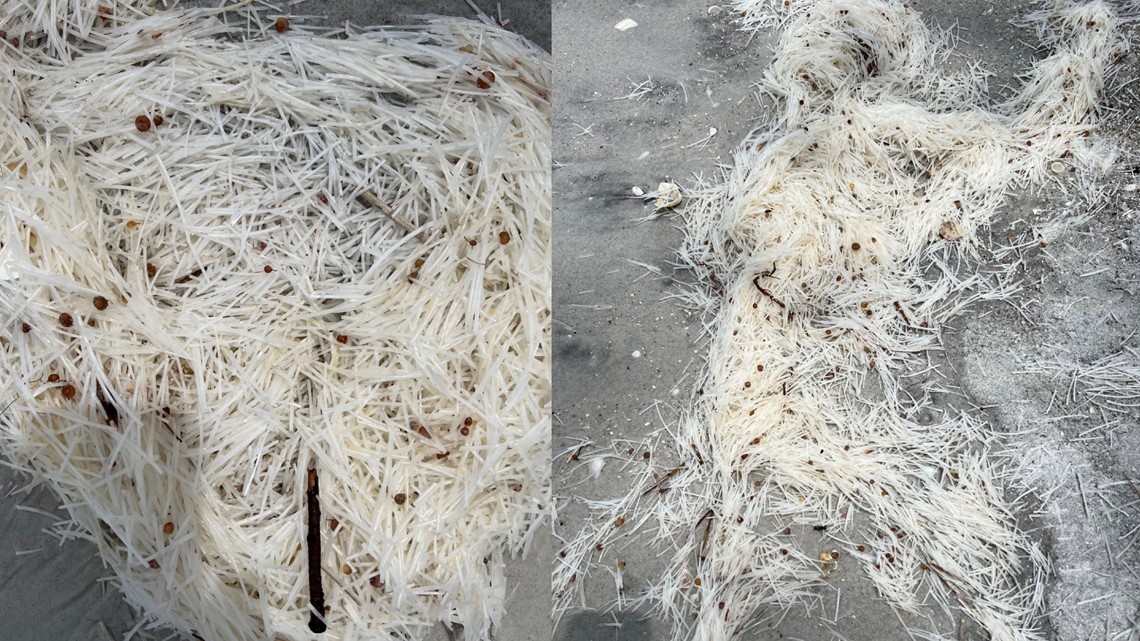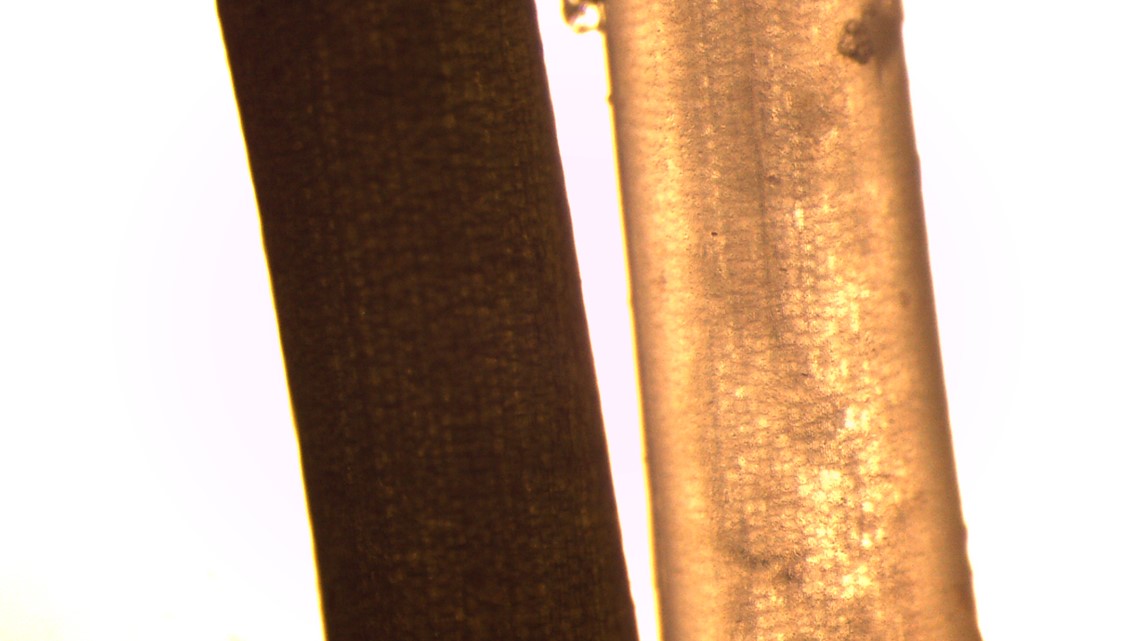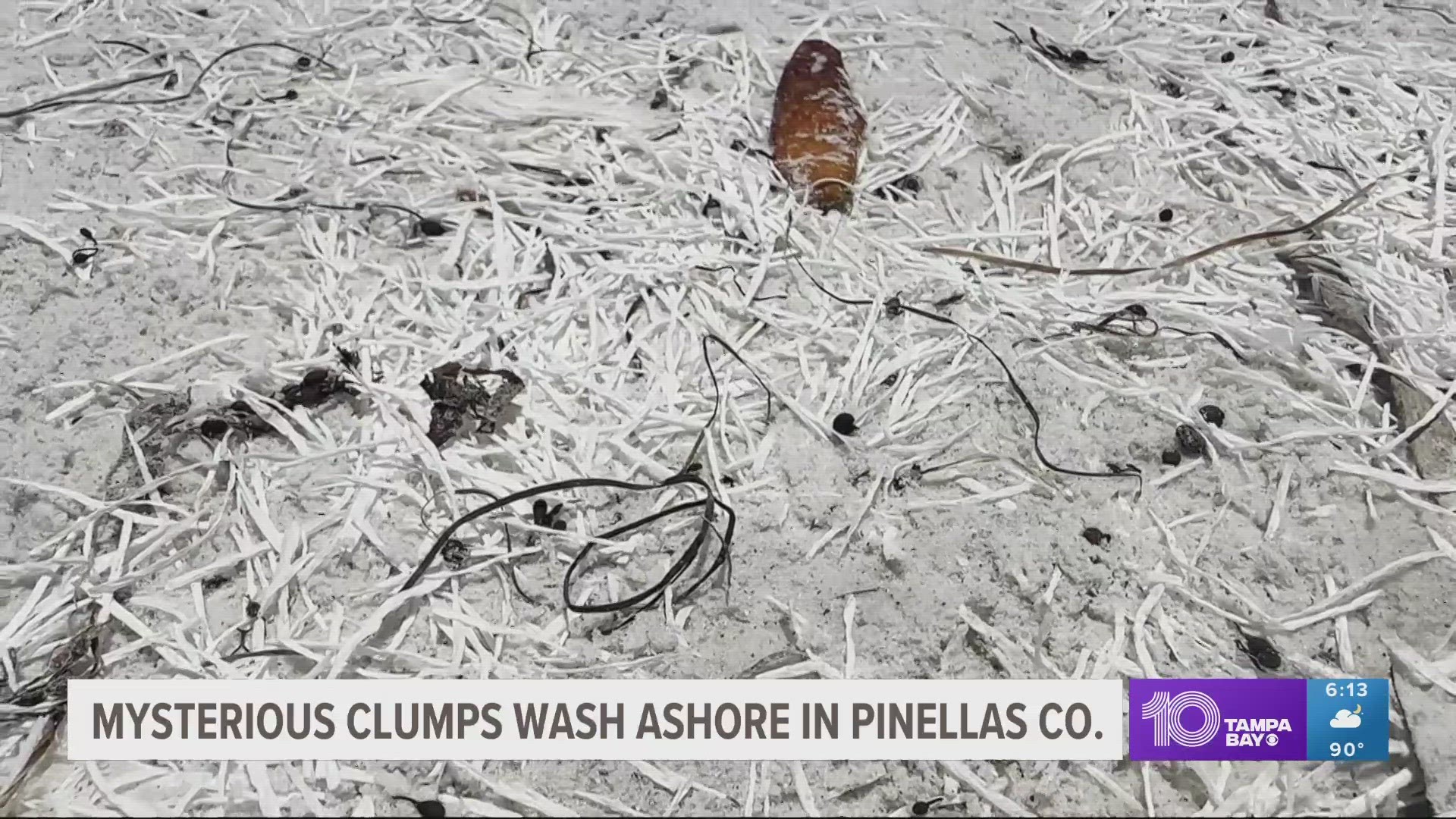PINELLAS COUNTY, Fla. — No, someone isn't dumping spaghetti on the beach like they did in the woods that one time... still, clumps of noodle-like plants are washing ashore along several Pinellas County beaches, leaving many people wondering what it is.
Thankfully, the Florida Fish and Wildlife Research Institute (FWC) was able to shed some light on the situation and identify the mysterious substance.
FWC researchers started their "investigation" after someone reported seeing the white material wash ashore on a beach in Pinellas County, they explained on Facebook.
The culprit — Syringodium filiforme, FWC says. But let's call it by its common name — manatee grass!
Manatee grass is a "type of seagrass characterized by its cylindrical leaves, which have a remarkable buoyancy when detached from the roots and rhizomes of the plant," FWC said in part on Facebook.


"Once separated, the leaves floated to the surface where they were bleached over time by the intense tropical and subtropical sun — causing the white appearance," FWC continued.
FWC said their researchers went the extra step in "cracking the case" by comparing a sample of the bleached manatee grass to a sample of healthy manatee grass. Taking a peek under a microscope, researchers said they were able to confirm both samples were from the same plant.


The noodle-like mystery material isn't solely found in Tampa Bay.
"We get this question every year, about this time of the year," Jace Tunnell, Marine Science Institute reserve director at the University of Texas, said.
Tunnell said the seagrass goes through different cycles. Think of this one as a tree losing its leaves, he explained.
Its presence can also have environmental benefits, Tunnell said. For instance, beaches have vegetation that grows on the sand dunes. The bleached manatee grass leaves can act as a fertilizer for the plants on the dunes.
Finding it on the beach can also be a sign of a healthy seagrass system, which can be beneficial for fishermen, since the seagrass act as nursery areas for shrimp, crabs, and fish, Tunnell said.
"This is a natural event that happens," Tunnell said. "Leave it there and nature will take care of itself."
If you happen upon manatee grass, bleached or not, you don't have to worry about coming into contact with it — it's harmless. Other things could be tangled up with it, so it's probably best to just leave it alone.
According to the University of Florida, manatee grass is the second-most common seagrass found in Florida waters. Its also frequently found throughout the Gulf of Mexico, the Caribbean, Bermuda and the Bahamas.
It's a favorite food for manatees, hence the name.

